2010 Toyota Sequoia 4×4

| The Good: – Very spacious interior – Comfortable ride quality – Decent off-road performer |
The Bad: – Some hard cabin plastics – Floaty handling – Full-size fuel economy |
One positive to come out of the recession was that car models that were previously not available in the GCC suddenly became available because they weren’t in demand anywhere else any more. One such model is the Toyota Sequoia, a massive SUV that was only available in the United States, but with a sudden focus on small economy cars there, these trucks had nowhere to go but the SUV-loving countries of the Middle East. The two-wheel-drive version of the Sequoia was initially launched in 2009 to a lukewarm response, so Toyota has finally released a proper four-wheel-drive version of the giant SUV that makes even the Land Cruiser look small in comparison.
The Sequoia’s styling is derived from the American-market Toyota Tundra pickup, whose platform the Sequoia also shares. Some call it ugly, but we actually happen to like it a lot. That upright grille and angry front-end add a lot of character to an otherwise unremarkable design. Of course, angry or not, the Sequoia is always going to appear scary, given its size.
We actually felt a bit embarrassed jumping onto this truck, considering we looked like mountain-climbing midgets doing so. The side-steps help a lot here, acting as a staircase to another floor. The cabin seems as wide as the one in a 747, with the plastics to match. Almost everything is hard plastic, except for the upper door sills and armrests, which has padded materials for the elbows. There is also a smidgeon of faux wood on the doors, wheel and shifter, which does not go with the grey interior.
The front seats are like armchairs, barely bolstered, clad in perfect leatherette and even ventilated. The rear in our top-of-the-line tester had the optional armchairs for two. All the armchairs offer an elevated seating position and amazing space, including headroom and legroom. The rear ones even slide front and back as well as recline. Access to the third row is mildly annoying since the second-row seat does not fully move out of the way, but the large-opening doors help a lot. Even legroom in this last row is enough for adults, and three can fit in a pinch back there.
Even with all seats in use, there is enough space left in the boot for a month’s worth of groceries. Fold down the last row, and there’s space for a big refrigerator. Fold down the second row too, and you could park a Tata Nano in there. If that wasn’t enough, there are literally hundreds of storage pockets, cubbies and buckets all over the cabin, in the armrests, in the doors, in the central console and in the dashboard. And of course, there are hundreds of cup-holders.
As for gadgetry, there is enough to keep things modern. All the usual power accessories are present. The tailgate as well as the folding third row are electrically operated. There are pull-up sun-shades on rear-side windows and a regular sunroof up front. The rear tailgate window can electrically open. The automatic a/c with rear vents is very strong. There is a touchscreen multimedia system that is a bit of a long reach, but has USB support, navigation, CD/MP3 capability, rear camera and decent speakers. There are multiple front and side airbags. There is a useful remote starter. And the tinny-sounding horn is straight out of a Toyota Yaris.
Powered by a massive 5.7-litre V8 so untypical of Toyota, the big motor churns out 381 hp at 5600 rpm, with 544 Nm of torque at 3600 rpm, fed through a smooth 6-speed automatic to a part-time four-wheel-drive system. The Sequoia 4×4 weighs 2747 kg, so even all that power feels a bit subdued, although fairly adequate. Our May test netted a 0-100 kph time of 8.5 seconds. And our overall fuel economy was 19.3 litres/100 km, hovering around the class average and ironically similar to that of the smaller-engined Land Cruiser.
There is a “sport” mode, but there isn’t any sportiness to speak of. The handling is wobbly, the steering is limp and it is best driven relaxed rather than hustled. There is lots of body roll and floatiness, so tying to corner fast is always an interesting bouncing-waterbed experience, which takes a little getting used to. Once you learn to manage the wobble through deft steering inputs, the Sequoia feels much easier to control. There is pretty reasonable grip from the 275/55 tyres on the 20-inch alloys. While the brake feel is spongy, they react strongly if fully depressed. And there is always stability control and ABS to save you.
It was initially disconcerting to drive the massive Sequoia on the highway, as we kept looking at the side-mirrors to check if the truck is within the lines. The mirrors are hard to miss, as they’re so big that it’s hard to see what’s behind them when making turns. The driving position is high, and playing with the height controls for the rear air suspension didn’t seem to change the altitude at all. But once we got used to it, it became easier to drive, just as we were returning the truck after a weekend. The commanding view helps navigate small city streets, while a reverse camera helps in parking, with the help of beeping sensors. Of course, we also made sure we never put ourselves in a tight situation, as the camera view has no guiding lines whatsoever.
While its size means you have to forgo parallel parking in certain cases, the payoff is the comfortable long-distance ride that this truck offers. It tramples speedbumps and potholes like a dinosaur on mosquitoes, and is quiet enough for the most part, as long as speeds are under 120 kph. The floaty suspension still causes the occasional stomach-churning bounce over some dips on the road, but it isn’t that much of a concern.
The four-wheel-drive Sequoia is offroad-capable, with a selection system for two-wheel-drive, 4-high and 4-low, as well as a locking centre diff. It has decent ground clearance and moves fine on desert sand, definitely with the street tyres deflated, or it feels bogged down even on level soft-sand areas. The stability control does not have a deactivation switch, so an easy newbie mistake to make would be to dive onto the beach and get stuck. However, slipping the transfer case into four-wheel-drive and locking the centre diff finally disables the traction control. There are limits to what a heavy long-wheelbase 4×4 can do, especially with lengthy front and rear bumpers, but a certain amount of dune-bashing is possible with some care taken at the bottom of the slopes. That juicy engine can pull this truck out of any mess.
The Sequoia is a straightforward competitor to big American SUVs which are rather popular in the Middle East. With tough styling for scaring pedestrians, fair offroad capability for desert picnics, and enough space for families who’ve never heard of birth control, the Sequoia can be an interesting alternative to a villa.
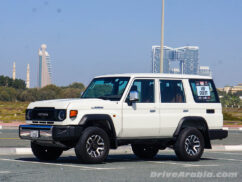
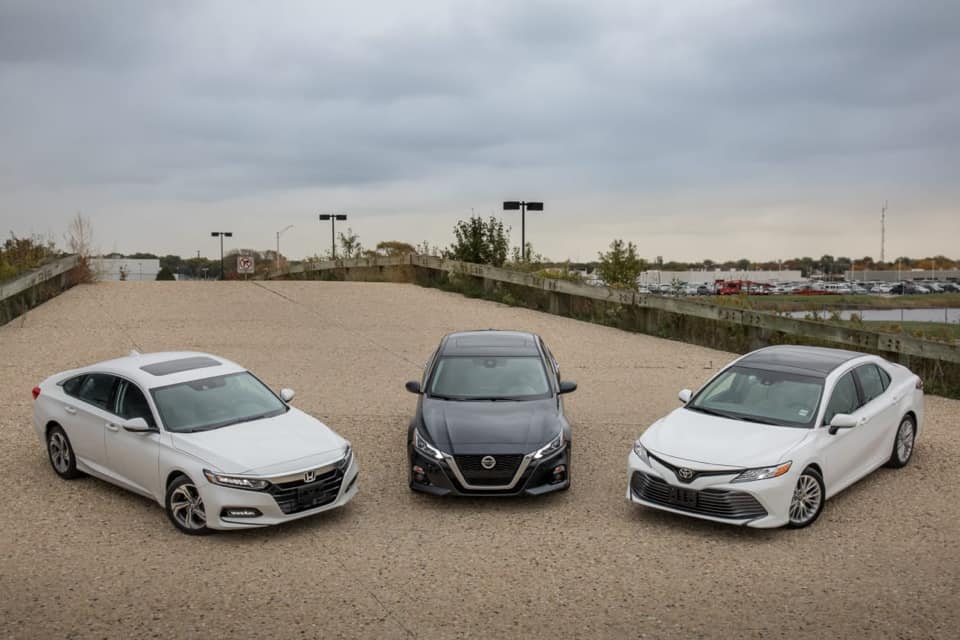
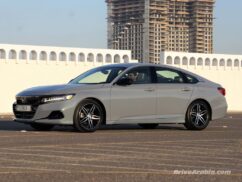
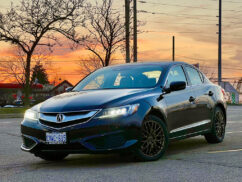
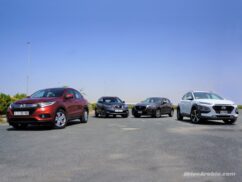
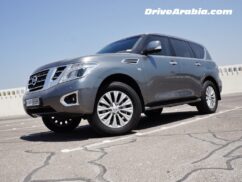
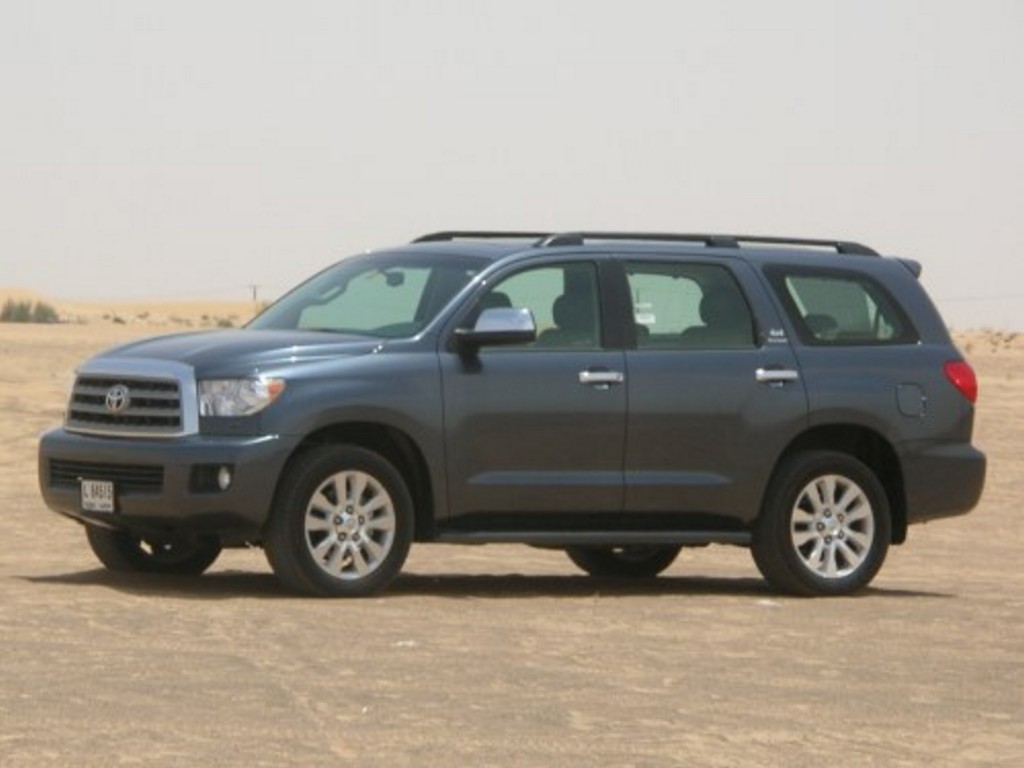
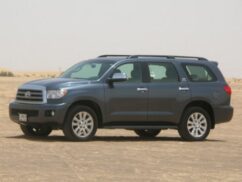
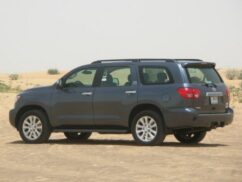
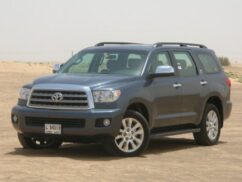
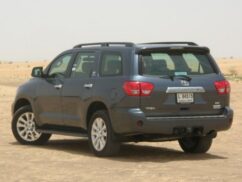
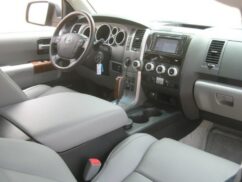
Comments
Alberto Kapamba
I love this vehicle so much that there is not a day that goes by without reading articles about it or seeing pictures of it. I’ve been saving money so that by December, 2012, I will be able to realise my dream, which is buying myself one. I am nearly there.
Mohamed Shameer
Dear Alberto Kapamba hope you have bought your favorite car. Why don’t you share your experience and your review about it here.